Set 173
1001. 30" tall:
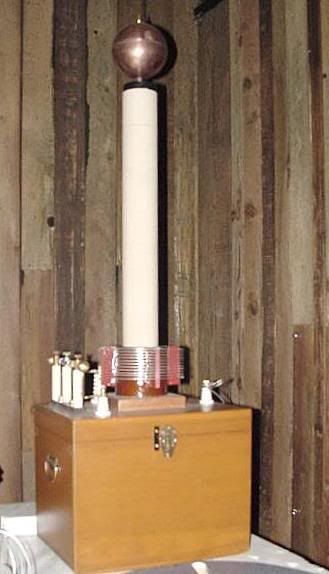
1002. Submitted by a visitor who is looking to find out what this tool is:
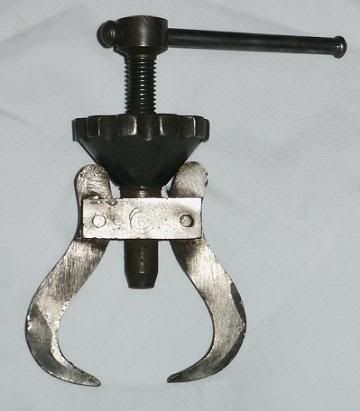
1003. 16" tall, when this device was new the circular parts on the upper right had small nets attached to them:
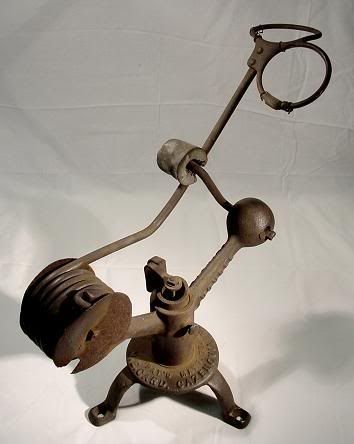
1004. 40" long, made of bamboo, with a metal clip. Take a look at Neatorama for more guesses on this one, where Alex is giving away a t-shirt for the first correct answer.
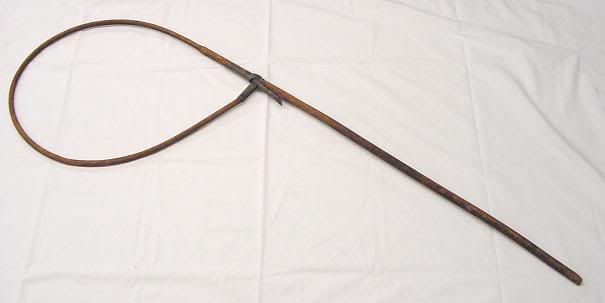
From Jim Brown's collection.
1005. 12" long:
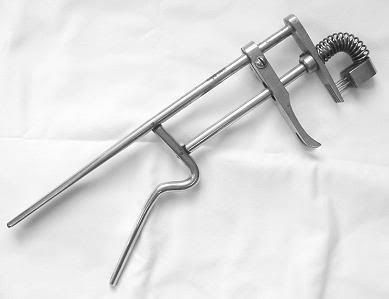
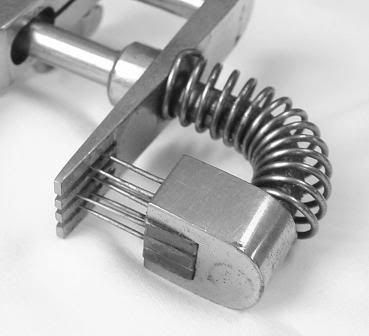

1006. 7-1/2" long:
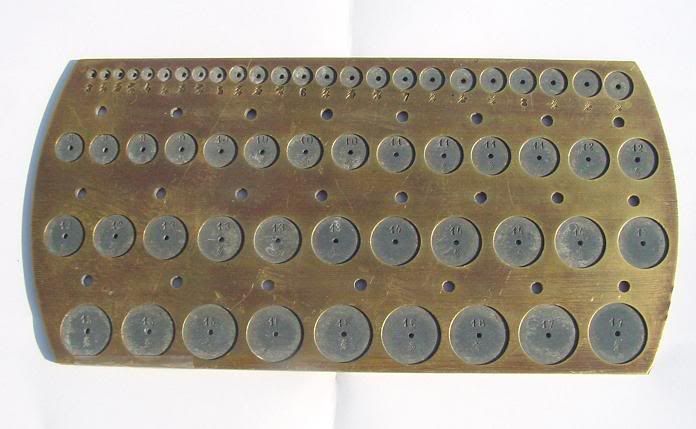
As you can see in this close-up, the holes are numbered 3, 3-1/4, 3-1/2, 3-3/4, 4, 4-1/4, 4-1/2..., with each integer having four holes. The last hole on this side is marked 17-1/4. The numbers appear to indicate a measurement in millimeters.
The first hole on the other side is 17-1/2 and the last is 23. I don't know exactly what this gauge was used for.
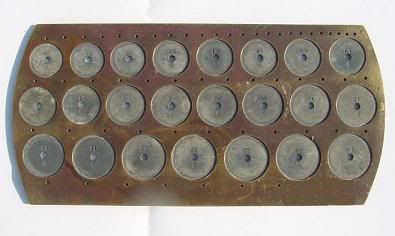
Close-up
Answers
Next week I'll be out of town for a few days, so I'll be posting on Wednesday instead of Thursday.
Last week's set is seen below, click here to view the entire post:
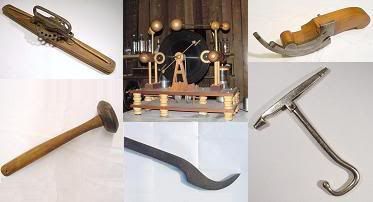
More discussion and comments on these photos can be found at the newsgroup rec.puzzles.

1002. Submitted by a visitor who is looking to find out what this tool is:

1003. 16" tall, when this device was new the circular parts on the upper right had small nets attached to them:

1004. 40" long, made of bamboo, with a metal clip. Take a look at Neatorama for more guesses on this one, where Alex is giving away a t-shirt for the first correct answer.

From Jim Brown's collection.
1005. 12" long:



1006. 7-1/2" long:

As you can see in this close-up, the holes are numbered 3, 3-1/4, 3-1/2, 3-3/4, 4, 4-1/4, 4-1/2..., with each integer having four holes. The last hole on this side is marked 17-1/4. The numbers appear to indicate a measurement in millimeters.
The first hole on the other side is 17-1/2 and the last is 23. I don't know exactly what this gauge was used for.

Close-up
Answers
Next week I'll be out of town for a few days, so I'll be posting on Wednesday instead of Thursday.
Last week's set is seen below, click here to view the entire post:

More discussion and comments on these photos can be found at the newsgroup rec.puzzles.
Labels: Science

7 Comments:
1001. Vandegraff generator, or static electircity generator
1002. Battery terminal puller, for top post automotive batteries. Gets 'em off without loosening the bolt in instances where the bolt is too severly corroded to move.
By Anonymous, at 6/07/2007 6:26 AM
Anonymous, at 6/07/2007 6:26 AM
1003 A launcher for clay pigeons.
1004 This was used for passing train orders to moving trains. It was held high by the station agent and the trainman on board would put his arm through the loop.
By Anonymous, at 6/07/2007 9:12 AM
Anonymous, at 6/07/2007 9:12 AM
1005 - Just a wild guess. Used to tattoo a distinctive pattern on cattle ears?
By Anonymous, at 6/08/2007 11:04 AM
Anonymous, at 6/08/2007 11:04 AM
1006: I think it's a gauge for brace and bit bits. The bits are marked in 1/16 of an inch. (1 = 1/16", 2 = 2/16" or 1/8", 3 = 3/16"). The giveaway would be if the hole marked 16 is 1" in dia. The hole in the bottom of each marked depression is for the auger screw.
By Anonymous, at 8/10/2007 9:13 PM
Anonymous, at 8/10/2007 9:13 PM
It is a draw plate
By Anonymous, at 5/08/2008 5:20 PM
Anonymous, at 5/08/2008 5:20 PM
1001 Sorry, this is not a Van de graaff generator. A Van de Graaff generator is an electrostatic generator which uses a moving belt to accumulate very high electrostatically stable voltages on a hollow metal globe on the top of the stand. This is a Tesla Coil for high voltage experiments. It does not use a moving belt to develop static electricity, but uses an oscillator to a High Voltage open type transformer to produce random frequencies (especially random if a spark gap type oscillator is used)usually in Khz range possibly 50KV to 250KV or higher. Some produce millions of volts AC with very long lightning like arcs.
By My Favorite Garden, at 3/04/2011 8:05 PM
My Favorite Garden, at 3/04/2011 8:05 PM
1004. Banana Picker
By Anonymous, at 7/14/2014 4:45 PM
Anonymous, at 7/14/2014 4:45 PM
Post a Comment
<< Home